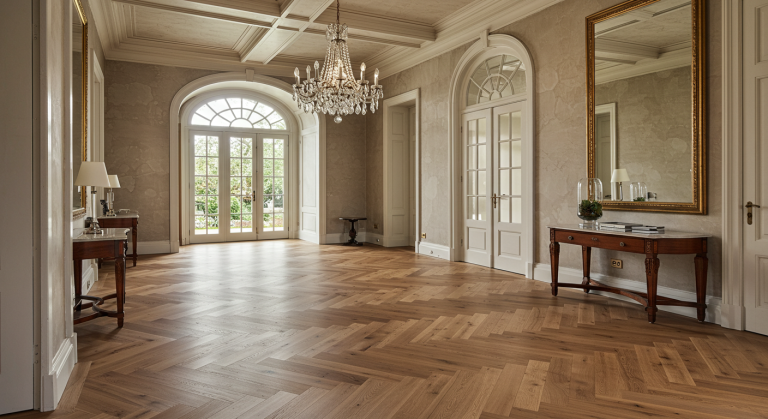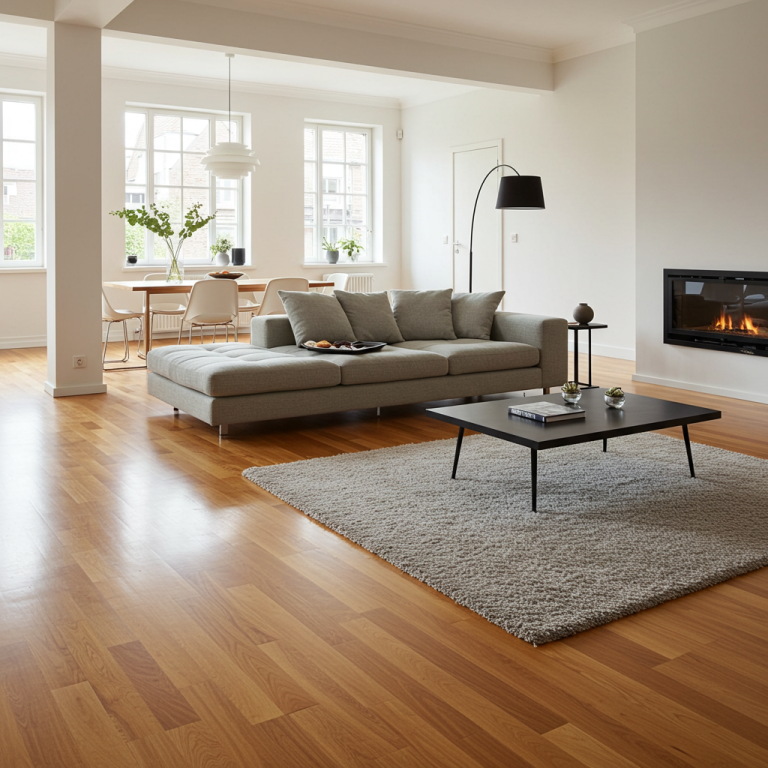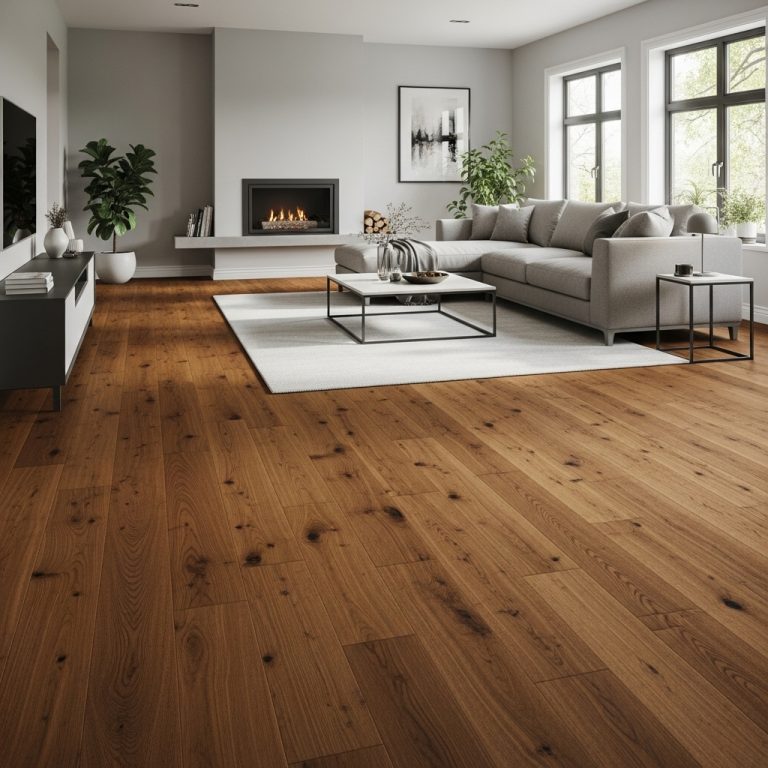Hand-Scraped Wood Flooring Guide 2025: Types, Pros, Cons, Costs & Design Trends

Flooring is more than just a surface you walk on—it sets the tone of a home’s character, warmth, and design. Among the many types of hardwood flooring available today, hand-scraped wood flooring holds a special place.
Unlike smooth and glossy hardwoods, hand-scraped wood flooring has a textured, rustic, and lived-in appearance. Each plank is intentionally scraped, either by hand or machine, to create grooves, ridges, and irregularities that mimic the charm of naturally aged wood.
This flooring style has become a favorite for farmhouse, rustic, vintage, and even luxury modern designs because it combines durability, timeless beauty, and authenticity.
In this ultimate guide to hand-scraped wood flooring in 2025, we’ll cover everything you need to know before choosing it for your home.

What is Hand-Scraped Wood Flooring?
Hand-scraped wood flooring is a type of hardwood where each plank is scraped or textured by hand or with specialized tools to create a worn, aged, and uneven surface.
Key Characteristics:
- Deep ridges, grooves, and subtle imperfections
- Natural variation from plank to plank
- Rustic, antique look
- Matte or low-sheen finish
Unlike traditional hardwood, which is polished and uniform, hand-scraped wood flooring celebrates imperfections and adds a sense of warmth, history, and craftsmanship.
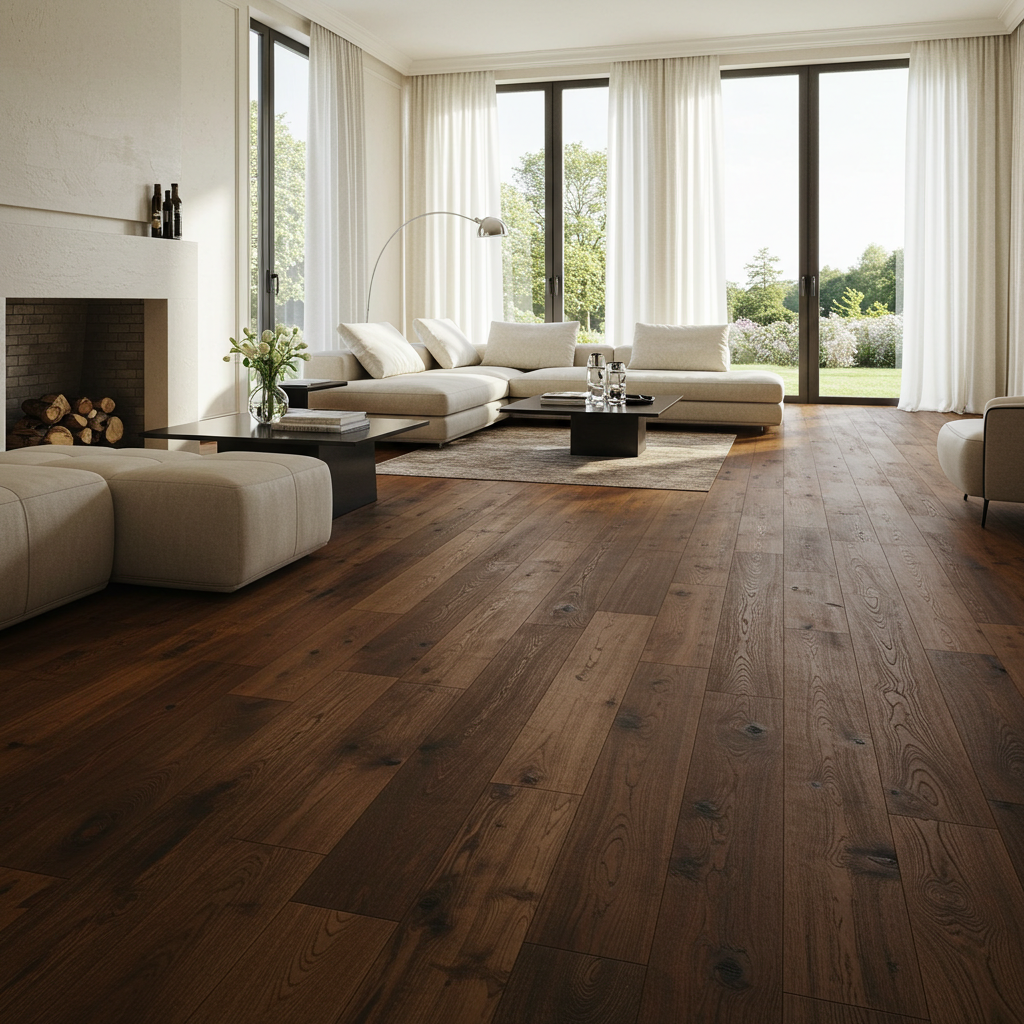
History of Hand-Scraped Wood Flooring
Before modern sanding machines were invented, all wood floors were scraped by hand. Craftsmen used blades and scrapers to smooth and level planks. These floors developed natural wear and character over decades of use.
- 18th–19th centuries – Hand-scraping was the norm in Europe and America.
- Early 20th century – Machine-sanded floors replaced hand-scraping, leading to smoother finishes.
- Late 20th century – Homeowners began craving the charm of aged floors, and hand-scraped flooring reemerged as a design trend.
- Today – It is a luxury flooring choice valued for its rustic authenticity and timeless appeal.
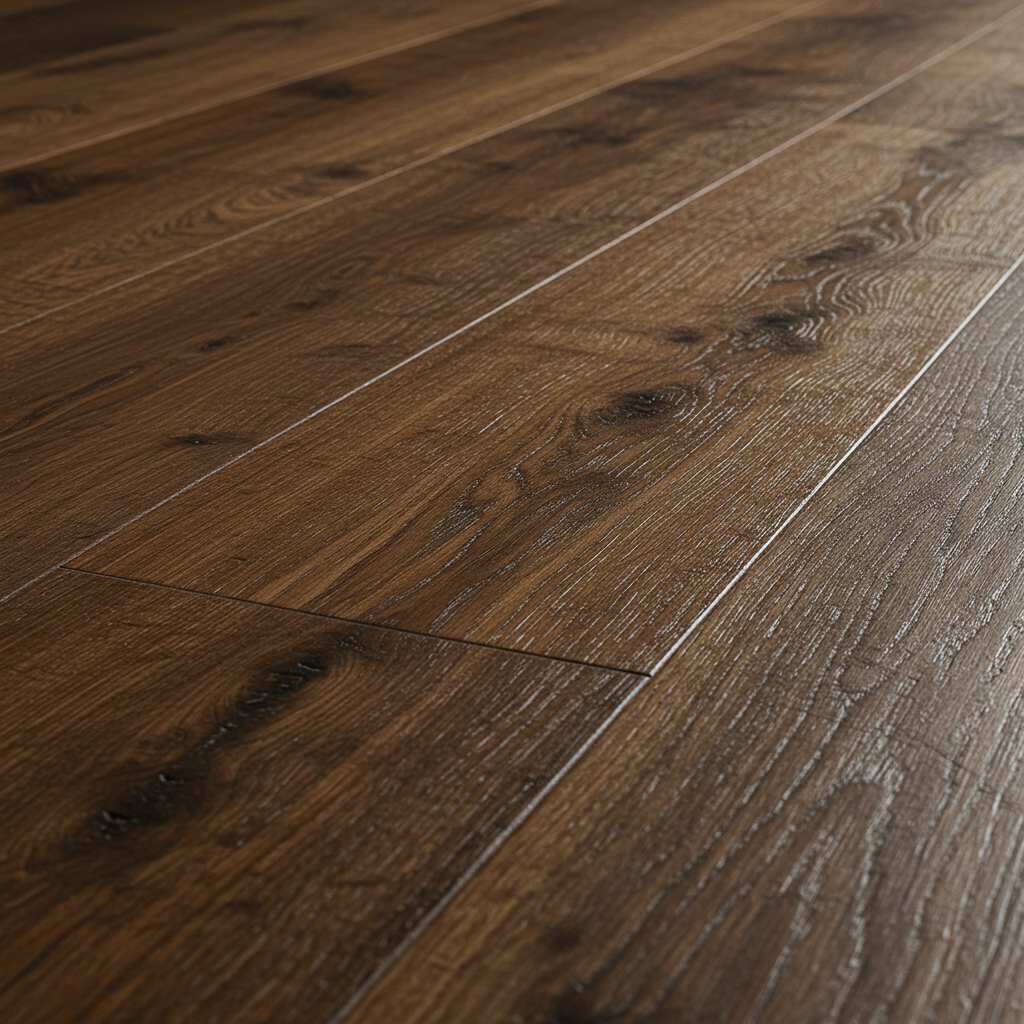
Types of Hand-Scraped Wood Flooring
There are different variations of hand-scraped flooring depending on technique and material.
1. Solid Hand-Scraped Hardwood Flooring
- Made from solid planks of hardwood.
- Can be sanded and refinished multiple times.
- Long-lasting (50+ years).

2. Engineered Hand-Scraped Hardwood Flooring
- Top veneer of hardwood over plywood layers.
- More stable against moisture and humidity.
- Easier to install and often more affordable.

3. Machine-Scraped (Handmade Look) Flooring
- Produced with machines to mimic hand-scraping.
- Uniform in appearance.
- Less expensive but less authentic.
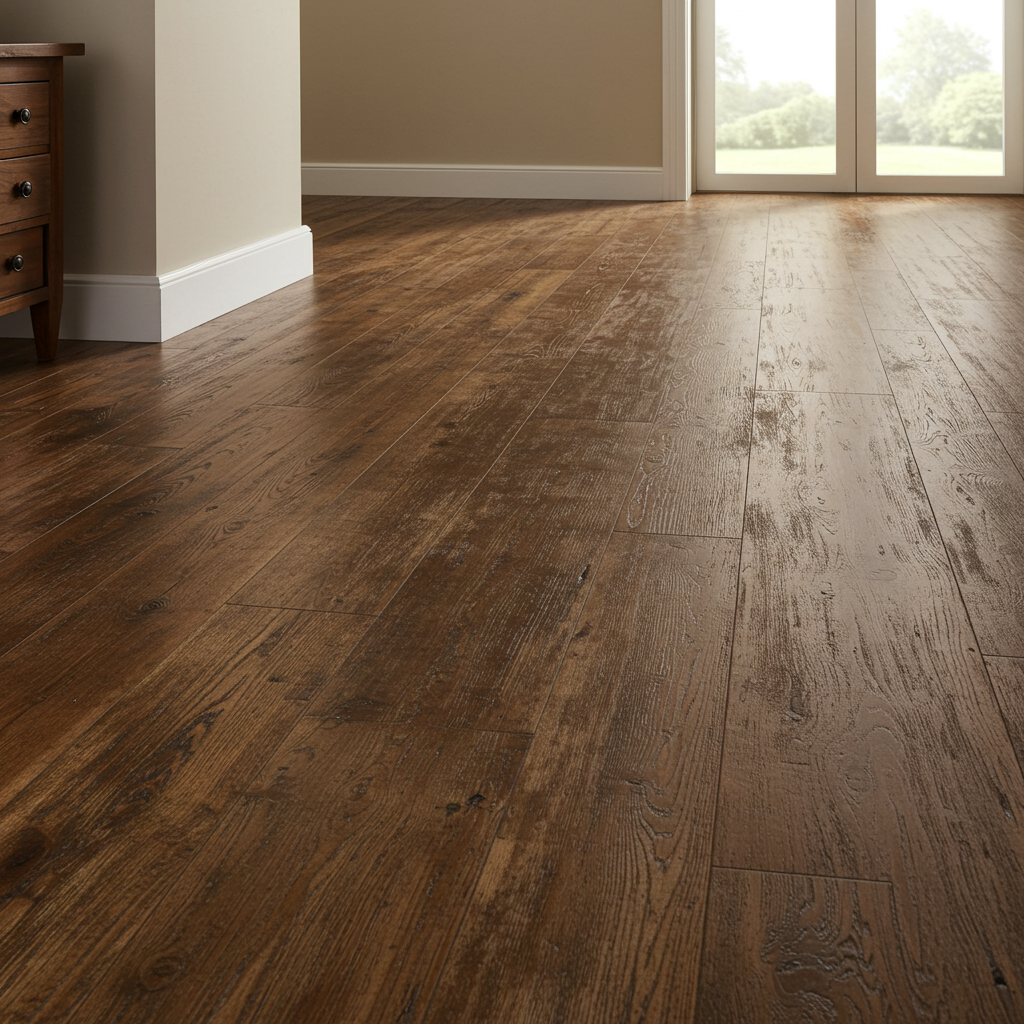
4. Reclaimed Hand-Scraped Wood Flooring
- Made from salvaged old barns, mills, or warehouses.
- Offers natural aging, nail holes, and patina.
- Most eco-friendly option.
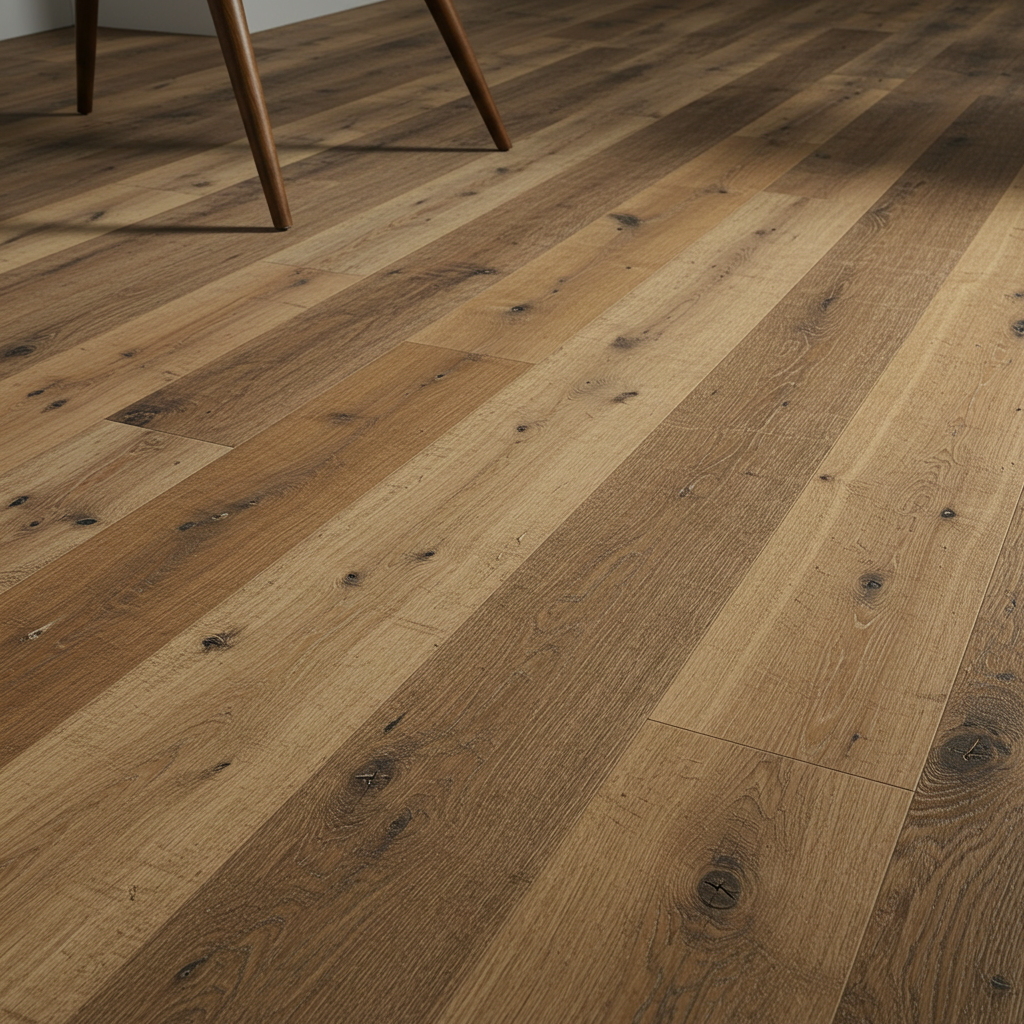
Pros of Hand-Scraped Wood Flooring
- Unique, Timeless Aesthetic 🎨
- Each plank is one-of-a-kind.
- Rustic, vintage charm that fits many design styles.
- Durability 🛠️
- Scratches and dents blend into the textured surface.
- Perfect for families, pets, and high-traffic areas.
- Longevity ⏳
- Solid hand-scraped hardwood can last decades.
- Engineered options last 20–40 years.
- Low Maintenance 🧹
- Hides imperfections, dust, and dirt well.
- Less frequent refinishing needed.
- Increases Property Value 💰
- Considered a premium flooring option.
- Attracts buyers looking for luxury and character.
Cons of Hand-Scraped Wood Flooring
- ❌ Higher Cost – More labor-intensive and often pricier than smooth hardwood.
- ❌ Design Specific – Works best in rustic, farmhouse, and vintage styles (not ultra-modern).
- ❌ Refinishing Challenges – Refinishing may reduce the textured effect.
- ❌ Quality Variations – Machine-scraped versions may lack authenticity.
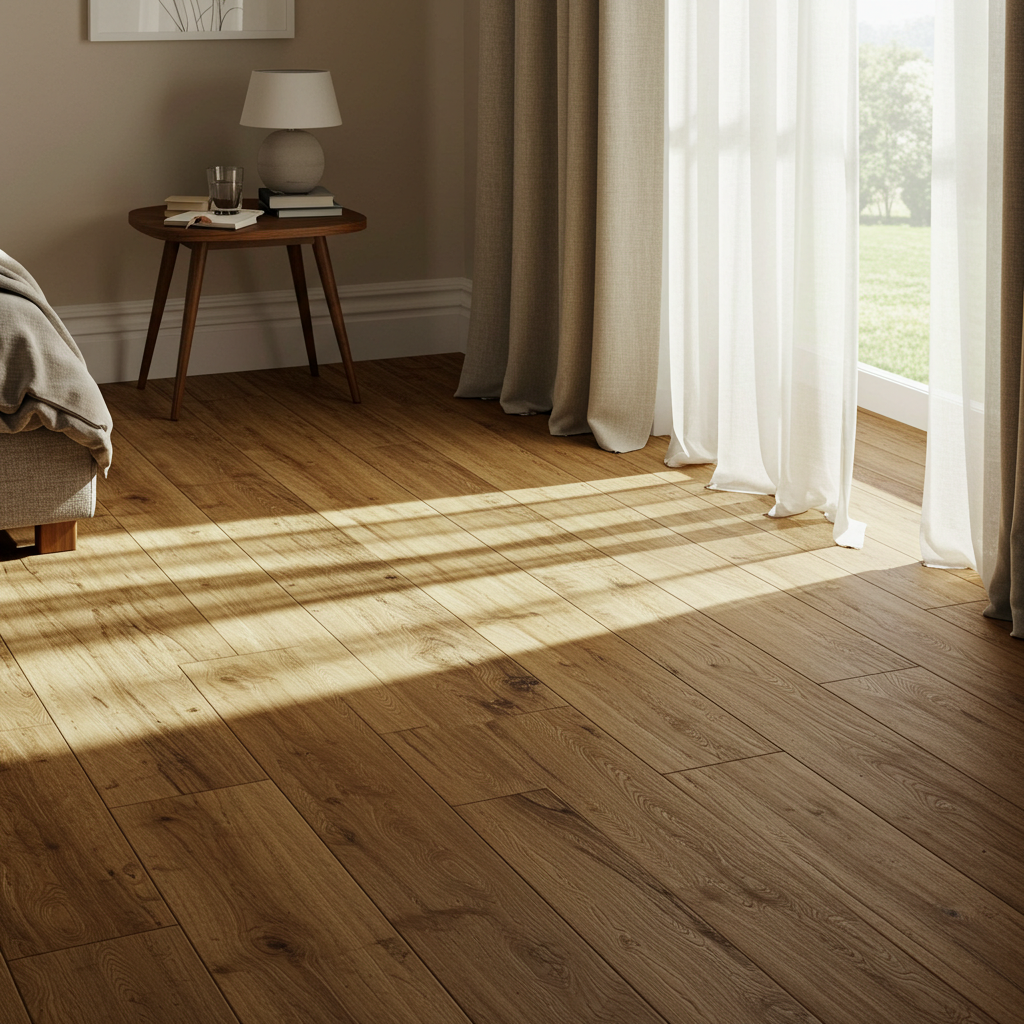
Hand-Scraped vs. Other Flooring Types
| Feature | Hand-Scraped Wood | Smooth Hardwood | Distressed Wood | Laminate/Vinyl |
|---|---|---|---|---|
| Appearance | Rustic, textured, unique | Polished, uniform | Rough, antique | Printed design |
| Durability | Hides scratches, dents | Scratches visible | Hides imperfections | Highly resistant |
| Cost | Moderate–High | Moderate | Moderate–High | Low |
| Refinishing | Limited | Easy | Limited | Not refinished |
| Style Fit | Farmhouse, rustic, luxury | Modern, traditional | Rustic, vintage | Budget, DIY |

Cost of Hand-Scraped Wood Flooring (2025 Update)
Pricing varies by material and installation:
- Engineered hand-scraped flooring: $6 – $12 per sq. ft.
- Solid hand-scraped hardwood: $8 – $18 per sq. ft.
- Reclaimed hand-scraped flooring: $12 – $25 per sq. ft.
- Installation costs: $4 – $10 per sq. ft.
- Total average: $12 – $30 per sq. ft.
Installation of Hand-Scraped Wood Flooring
Installing hand-scraped flooring requires care and expertise.
Step 1: Prepare Subfloor
- Must be clean, level, and moisture-free.
Step 2: Acclimate Flooring
- Let planks sit indoors for 48–72 hours.
Step 3: Installation Method
- Nail-down (solid hardwood).
- Glue-down (engineered wood).
- Floating click-lock (engineered hand-scraped).
Step 4: Finishing
- Many planks are pre-finished, but unfinished options allow custom staining.

Maintenance & Care for Hand-Scraped Wood Flooring
- Sweep or vacuum regularly.
- Clean with a damp mop and wood-safe cleaner.
- Avoid steam mops and harsh chemicals.
- Use rugs in high-traffic zones.
- Refinish every 7–10 years if needed (light sanding only).
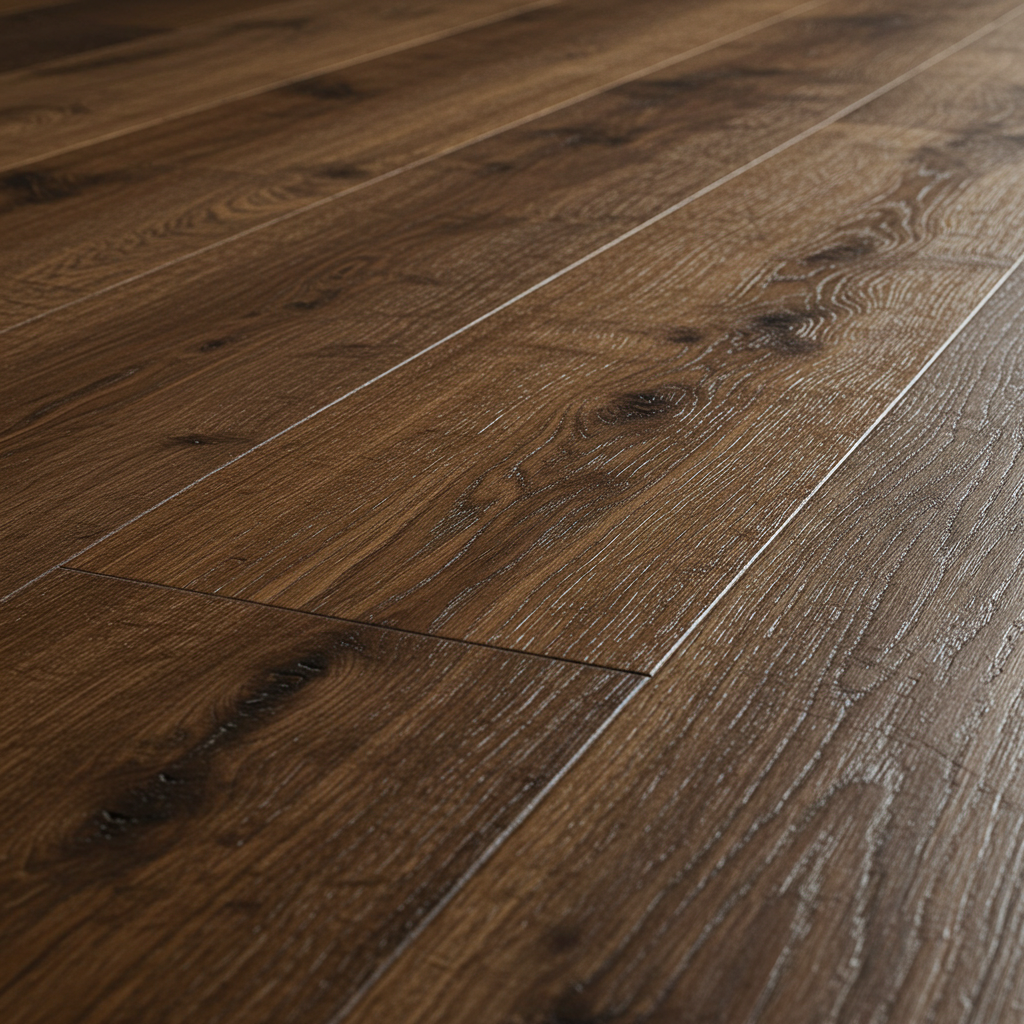
Hand-Scraped Wood Flooring Trends in 2025
- Wide Planks – Makes rooms feel more open and modern rustic.
- Gray & Whitewashed Finishes – Coastal farmhouse appeal.
- Dark Espresso & Charcoal Tones – Luxurious, dramatic look.
- Matte & Low-Sheen Surfaces – Enhances natural authenticity.
- Reclaimed Hand-Scraped Flooring – Eco-friendly and highly desirable.
- Mixed-Tone Planks – Adds depth and visual interest.
Where to Use Hand-Scraped Wood Flooring
- Living rooms (warmth and character).
- Bedrooms (cozy and inviting).
- Dining areas (luxury appeal).
- Offices (rustic charm meets professionalism).
- Retail shops and restaurants (durable and stylish).
⚠️ Not recommended for bathrooms or basements unless using engineered planks with moisture protection.
Buying Guide: Choosing the Best Hand-Scraped Flooring
When buying, consider:
- Wood Species – Oak, hickory, maple, and walnut are common.
- Type – Solid vs. engineered.
- Finish – Pre-finished vs. site-finished.
- Authenticity – Hand-scraped vs. machine-scraped.
- Budget – Engineered options are more cost-effective.
- Room Location – Engineered wood for moisture-prone areas.
Frequently Asked Questions (FAQs)
Q1: Is hand-scraped wood flooring real hardwood?
Yes, it’s made from solid or engineered hardwood planks.
Q2: Does hand-scraped flooring go out of style?
No—its rustic, vintage look is timeless and adapts to trends.
Q3: Is it good for pets and kids?
Yes, scratches and dents blend into the textured design.
Q4: Can hand-scraped wood be refinished?
Yes, but light sanding is recommended to preserve texture.
Q5: How long does it last?
Solid hardwood: 50–100 years. Engineered: 20–40 years with proper care.
Conclusion
Hand-scraped wood flooring is more than just flooring—it’s a design statement. With its rich texture, timeless charm, and ability to hide wear and tear, it remains one of the most practical yet luxurious flooring options in 2025.
While it costs more than standard hardwood, the character, durability, and property value it adds make it a worthwhile investment for homeowners seeking beauty and functionality.
If you want a floor that looks elegant yet lived-in, rustic yet modern, and durable enough for everyday life, hand-scraped wood flooring is the perfect choice.


